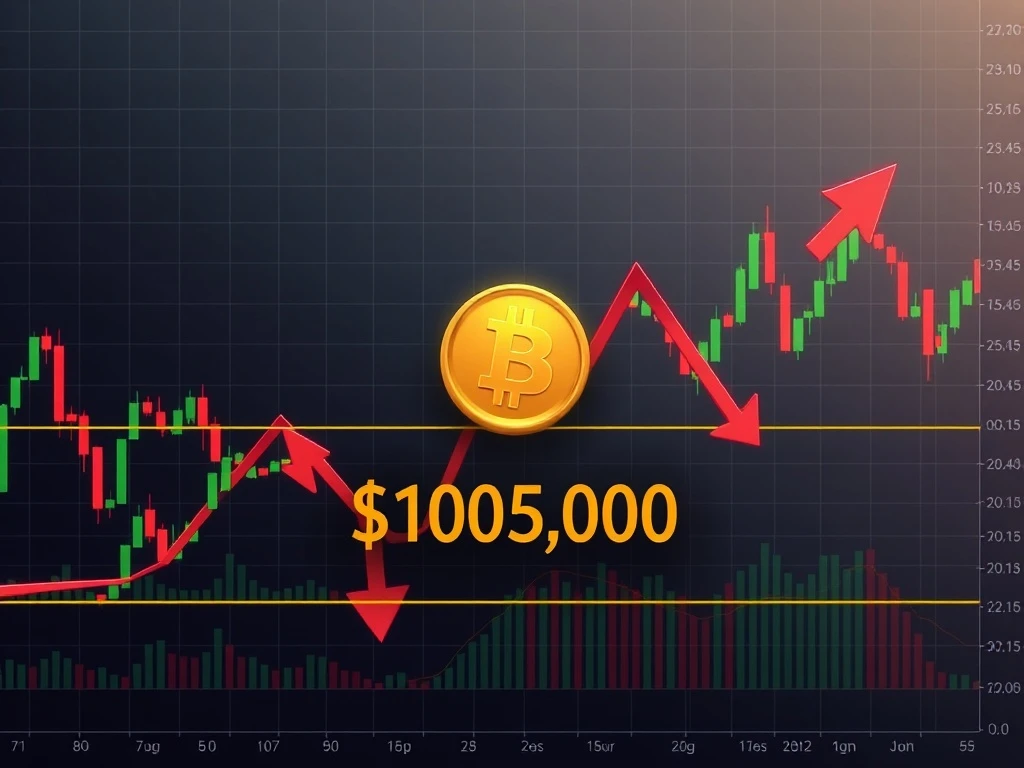Bitcoin faces a critical test as BTC price plunges below the crucial $109,300 support level, triggering massive liquidations and raising concerns about deeper corrections. The cryptocurrency’s dramatic 13% pullback from all-time highs has traders closely watching key technical indicators for signs of either recovery or further decline.
Bitcoin Price Technical Breakdown
Bitcoin’s sudden decline breached multiple critical support levels that previously served as strong foundations. Consequently, the 100-day exponential moving average at $110,820 failed to hold, signaling potential further downside. Moreover, traders now eye the 200-day simple moving average near $101,000 as the next major support zone.
Technical analyst Cryptorphic warns: “BTC has broken below the 100 EMA on the daily chart. Historically, every drop below this EMA has led to a short-term pullback.” This breakdown suggests the possibility of a deeper correction toward $103,000.
Key Support Levels and Market Sentiment
Market participants identify several crucial support zones that could determine Bitcoin’s near-term trajectory. Significantly, the $100,000-$107,000 range represents the first major defense line where short-term holder realized price intersects with the 200-day SMA.
Analyst Axel Adler Jr. emphasizes: “The nearest strong support zone is the 100K–107K range. Below that lies additional support around 92–93K, reflecting the cost basis of short-term investors.” These levels will prove critical for maintaining bullish market structure.
Liquidation Cascades and Market Dynamics
Recent market activity shows nearly $500 million in long liquidations since Sunday, creating intense selling pressure. However, some traders now anticipate a potential short squeeze that could drive Bitcoin price back toward $114,000.
Exchange order book data reveals that downside liquidity has been largely exhausted. Popular trader BitBull predicts: “I think BTC will hit $114K-$115K this week, leading to a nice rally in alts.” This suggests trapped shorts might fuel a rapid price recovery.
On-Chain Metrics and Investor Behavior
Weakening on-chain indicators, including declining trade volume and RSI divergences, contribute to the current bearish sentiment. Nevertheless, Bitcoin’s speculative investor base often provides support during pullbacks in bull markets.
The short-term holder cost basis, particularly for investors holding 3-6 months, creates natural support zones. These levels historically function as accumulation areas during healthy market corrections.
Market Outlook and Potential Scenarios
Traders currently monitor two primary scenarios: either a quick reclaim of the 100-EMA around $110,820 or a deeper correction toward $100,000. The $114,000 level remains particularly interesting due to concentrated short liquidation clusters.
Analytics account TheKingfisher notes: “Price often gets pulled to these levels. Smart money is likely using this as fuel.” This suggests sophisticated traders might be positioning for volatility expansion.
Frequently Asked Questions
What caused Bitcoin’s price to drop below $109K?
Massive long liquidations totaling nearly $500 million combined with breaking key technical support levels triggered the decline.
What are the key support levels to watch?
Traders should monitor $107,000, $103,000, and the critical $100,000 psychological level, with the 200-day SMA at $101,000 being particularly important.
Could Bitcoin drop below $100,000?
While possible, the $100,000-$107,000 range contains multiple strong support levels that historically provide buying opportunities during bull markets.
What would trigger a price recovery?
A reclaim of the 100-EMA at $110,820 or a short squeeze targeting the $114,000 liquidation zone could spark renewed bullish momentum.
How are altcoins affected by Bitcoin’s price movement?
Altcoins typically follow Bitcoin’s direction but often experience amplified movements during both downturns and recoveries.
What time frame should investors consider?
Short-term traders focus on hourly and daily charts, while long-term investors view corrections as normal within broader bull market cycles.
This analysis provides market context only and does not constitute investment advice. Always conduct personal research and consider risk tolerance before making trading decisions.








